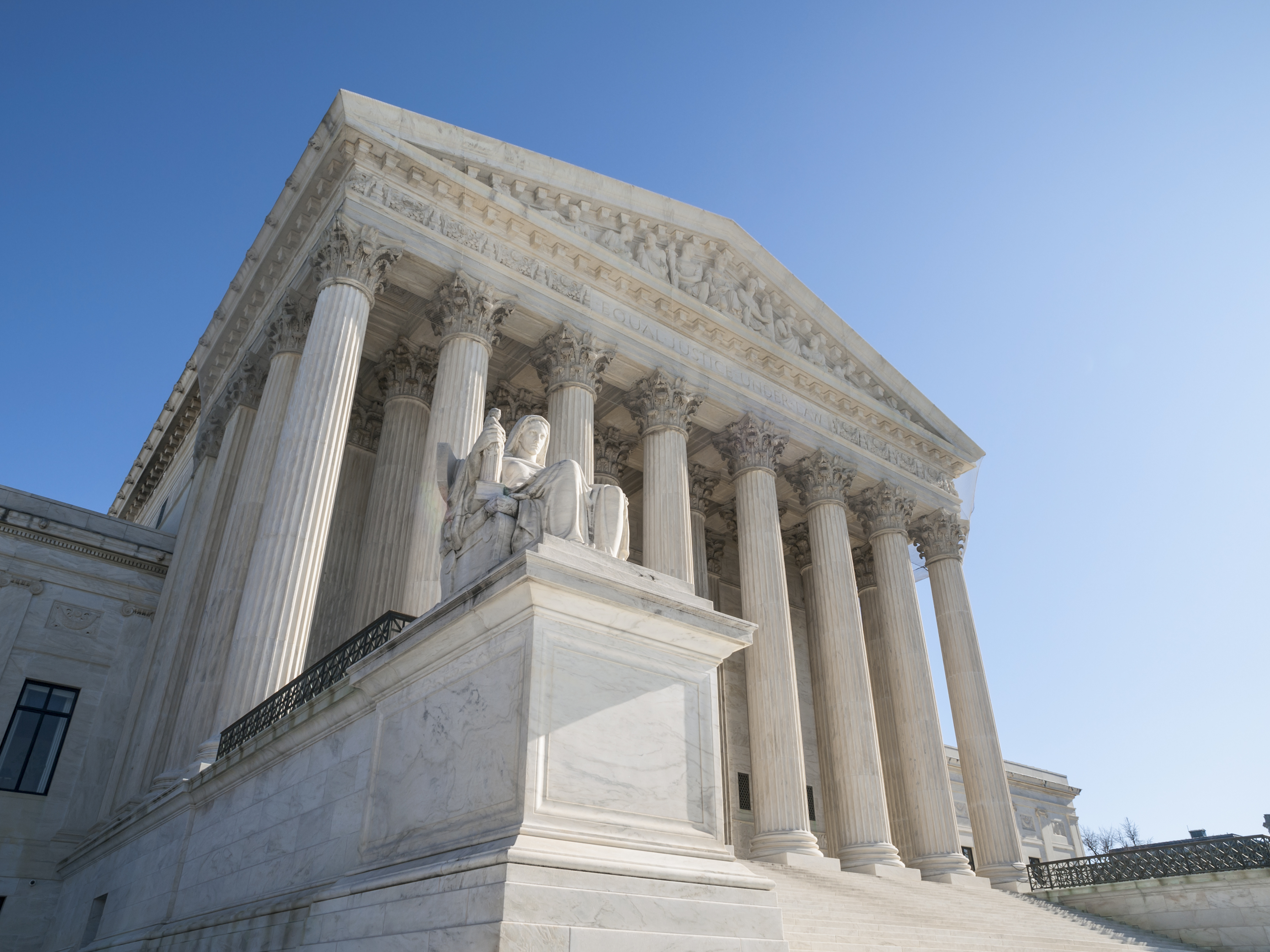
There was more laughter than stern words during two hours of oral arguments, and Kavanaugh was an active participant in his first sitting with his new colleagues.
Chief Justice John Roberts Jr. noted Kavanaugh's arrival with the court's traditional welcome: "Justice Kavanaugh, we wish you a long and happy career in our common calling," Roberts said.
From there, the court plunged into three cases that called on them to decipher the Armed Career Criminal Act, passed by Congress in 1984 and designed to get people with a history of violence off the streets by enhancing prison terms.
It provides stiffer penalties for those who are convicted in federal court of possessing firearms if they have previously been found guilty of violent felonies or serious drug offenses. But deciding what constitutes a violent felony is often difficult because state laws do not always match up precisely.
Stokeling v. United States involved a Florida man who said his conviction for snatching a necklace from someone's neck should not count as a violent felony.
Kavanaugh did not join his colleagues in colorful hypotheticals testing what sorts of offenses would qualify a crime as a violent felony involving the use or threat of physical force.
What about a pinch? asked Justice Sonia Sotomayor, who appeared to pinch her seatmate, Justice Neil Gorsuch.
Roberts wondered about snatching a dollar bill from someone.
"I held on to a dollar bill and asked each of my law clerks to try to pull it out of my hand. And I was surprised," Roberts said. "I'm not saying nobody could do it" - Roberts was interrupted by laughter - "but it requires a lot more force than you might think."
But Brenda Byrn of Fort Lauderdale, Florida, representing Denard Stokeling, said it was nothing like the descriptions the court has previously used to denote a violent act, "which are severe force - extreme, furious, vehement, strong and powerful force."
The second half of the argument involved burglaries, which can be considered violent felonies. The Supreme Court has said such a crime takes place in a "building or structure." But laws in Tennessee and Arkansas, among others, are broader and include mobile homes, RVs and other vehicles in which people sleep.
Again came the hypotheticals. Sotomayor asked: What if someone burglarized a car that basically serves as a home for a homeless person?
Kavanaugh resisted Stanford University law professor Jeffrey Fisher's point that the law was vague about what constituted a structure.
"I think if you're convicted three separate times of breaking into an RV . . . you would be on some notice that you shouldn't be possessing a firearm under federal law," Kavanaugh said.
Those cases are United States v. Stitt and United States v. Sims.
Wearing the same black robe he wore on the U.S. Court of Appeals for the D.C. Circuit, Kavanaugh, 53, seemed at ease, and at the end of arguments, Justice Elena Kagan, seated next to him, offered a handshake.
In the courtroom for Kavanaugh's first day was his former boss and the justice he replaced on the bench, Anthony Kennedy, as well as the spouses of some of the justices.
Kavanaugh's family - his parents, Martha and Ed, and his wife, Ashley, and two daughters - were also in attendance.
The serene, orderly setting in the formal courtroom was in stark contrast to Senate hearings last month that led to Kavanaugh's confirmation.
On Tuesday, the protesters were outside.
Some arrived before sunrise with signs and shirts and red robes pulled from "The Handmaid's Tale," hoping to catch the newest Supreme Court justice on his first day on the job.
It was not a big crowd - roughly 40 protesters at its most robust - but organizers said they did not need masses to get their message across.
"Some people say it's of no use to do this, because Kavanaugh is on the court anyway, but it's important to stand in our power and be heard, to say, 'No, we do not consent to this,' " said Lisa Fithian, an activist from Austin who organized Tuesday's protest. "I am tired. It's been an emotional time. But I feel this is something we have to do."
As the Supreme Court began to stir early Tuesday, protesters gathered at the rear of the court building, where the justices enter an underground garage.
They held signs that said "We the people do not consent" and "We will not forget." As black SUVs with dark-tinted windows drove past and into the court's garage, they pumped their fists in the air and chanted, "Shame!"
"They know we're out here," Fithian said. "Those cars were carrying him or some of the other justices. They saw us."
About 9 a.m., the protest migrated to the front of the building, past a long line of people waiting their turn to possibly catch a glimpse of the newest justice.
The protesters marched past two by two, chanting, "Kavanaugh's not welcome here!"
"You're not welcome here!" shouted Barbara Richards, 62, from her place in line.
Startled, a few protesters took a step back.
Richards, a self-described history buff, had come to Washington on her honeymoon to watch history unfold in real time. She shook her head at the protesters.
"They're just following along like such a group of sheep. They don't even know why they're protesting," Richards said. "Brett's a Christian. He's a good man. He's spent his life being of service. I think he's been fair, and if they took a minute to actually look at his record, they might see that, too."


 Contact The Editor
Contact The Editor
 Articles By This Author
Articles By This Author